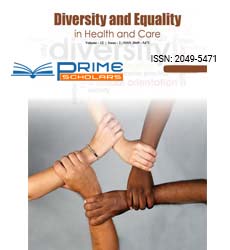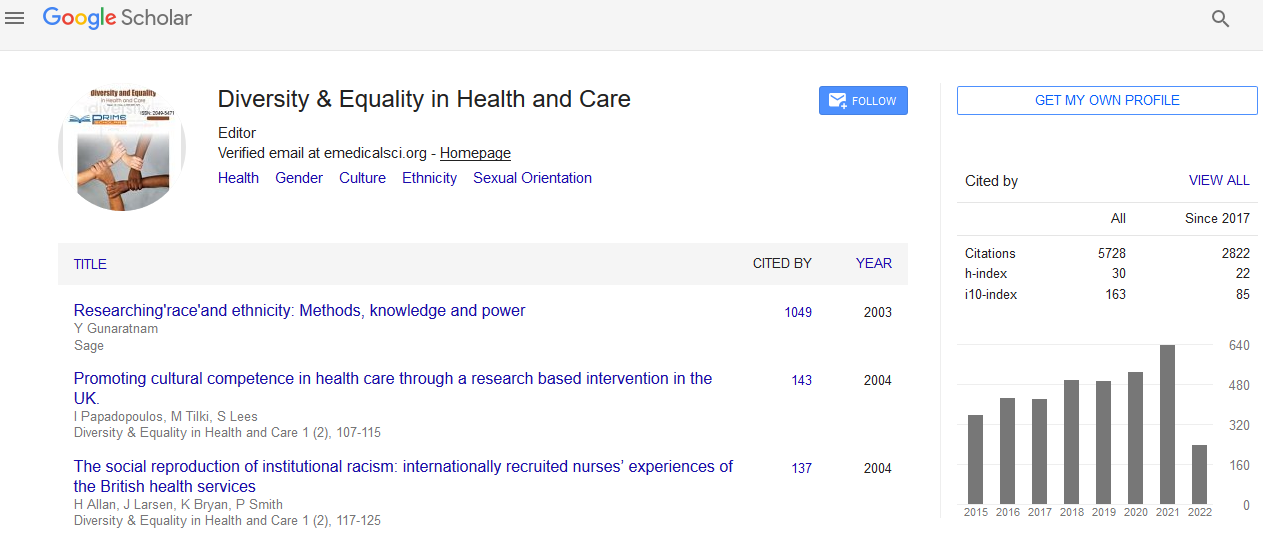Opinion - (2025) Volume 22, Issue 1
Embracing Diversity: The Pillar of Progress and Unity
Morgan Bateson*
Department of Neurological Sciences, Rush University Medical Centre, Italy
*Correspondence:
Morgan Bateson, Department of Neurological Sciences, Rush University Medical Centre,
Italy,
Email:
Received: 30-Apr-2024, Manuscript No. IPDEHC-24-19701;
Editor assigned: 03-May-2024, Pre QC No. IPDEHC-24-19701 (PQ);
Reviewed: 20-May-2024, QC No. IPDEHC-24-19701;
Revised: 17-Feb-2025, Manuscript No. IPDEHC-24-19701 (R);
Published:
24-Feb-2025, DOI: 10.36648/2049-5471.22.1.59
Introduction
In a world marked by varying cultures, traditions, beliefs, and lifestyles, diversity stands as one of humanity's most defining characteristics. It shapes our experiences, perspectives, and interactions, enriching societies with a tapestry of colors, languages, and ideas. However, the journey towards embracing diversity has been fraught with challenges, prejudices, and conflicts. Despite this, the value of diversity in fostering progress, innovation, and unity cannot be overstated. In this article, we delve into the significance of diversity, exploring its benefits, challenges, and the imperative of fostering inclusive environments in today's interconnected world. Diversity encompasses the myriad dimensions that make individuals unique, including but not limited to race, ethnicity, gender, sexual orientation, religion, socioeconomic status, age, and ability. It extends beyond visible differences to encompass diverse perspectives, experiences, and ways of thinking. Recognizing and celebrating diversity involves acknowledging the richness of these differences and embracing them as sources of strength rather than division. Diversity fosters innovation by bringing together individuals with varied backgrounds, skills, and perspectives. When people from different walks of life collaborate, they bring fresh ideas, approaches, and solutions to the table. Diverse teams are more likely to think outside the box, challenge conventional wisdom, and drive creativity in problem-solving.
Description
Exposure to diverse perspectives expands one's understanding of the world and cultivates empathy and cultural competence. In educational settings, exposure to diverse peers and viewpoints encourages critical thinking, broadens horizons, and prepares individuals for global citizenship. Similarly, in professional environments, diversity promotes continuous learning, skill development, and adaptability. Diversity is increasingly recognized as a driver of business success and competitiveness. Companies that prioritize diversity and inclusion benefit from a wider talent pool, improved employee satisfaction and retention, enhanced decision-making, and increased innovation. Moreover, diverse organizations are better equipped to understand and cater to diverse customer needs and preferences, thereby gaining a competitive edge in the marketplace. Embracing diversity is essential for building inclusive societies characterized by mutual respect, understanding, and cooperation. By fostering dialogue, cross-cultural exchange, and collaboration, diverse communities can overcome stereotypes, prejudice, and discrimination. Embracing diversity promotes social cohesion, reduces social tensions, and contributes to a more peaceful and harmonious world. Despite its myriad benefits, embracing diversity is not without its challenges. Deep-seated prejudices, stereotypes, and systemic inequalities continue to perpetuate discrimination and exclusion in various spheres of life. Unconscious biases based on race, gender, or other characteristics can influence decision-making, interactions, and opportunities.
Conclusion
These biases often manifest in subtle ways, contributing to disparities in hiring, promotions, and access to resources. Structural inequalities and discriminatory practices marginalize certain groups, limiting their opportunities for education, employment, healthcare, and social participation. Discrimination based on factors such as race, gender identity, or disability persists despite legal protections and societal progress. Cultural differences can lead to misunderstandings, conflicts, and tensions, particularly in multicultural societies. Lack of awareness, communication barriers, and ethnocentrism can exacerbate cultural clashes and hinder effective collaboration and integration. Embracing diversity requires challenging entrenched norms, biases, and power structures, which can provoke resistance and backlash. Some individuals or groups may perceive diversity initiatives as threats to their status, leading to opposition or hostility.
Citation: Bateson M (2025) Embracing Diversity: The Pillar of Progress and Unity. Divers Equal Health Care. 22:59.
Copyright: © 2025 Bateson M. This is an open-access article distributed under the terms of the Creative Commons Attribution
License, which permits unrestricted use, distribution, and reproduction in any medium, provided the original author and source
are credited.

